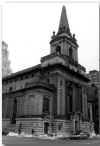 |
New York
Architecture Images-Upper West Side First Church of Christ, Scientist |
|
architect |
Carrere & Hastings |
|
location |
One West 96th Street at Central Park West |
|
date |
1904 |
|
style |
Neo-Georgian "a major monument of the Composite Era" Stern |
|
construction |
white Concord granite |
|
type |
Church |
|
|
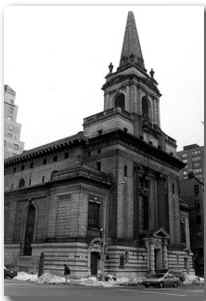 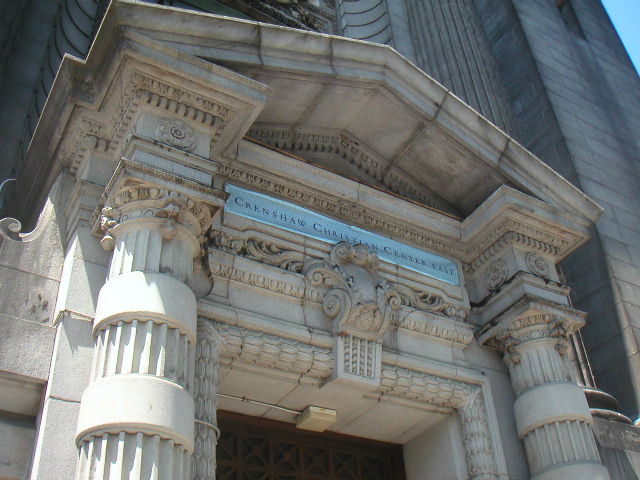 |
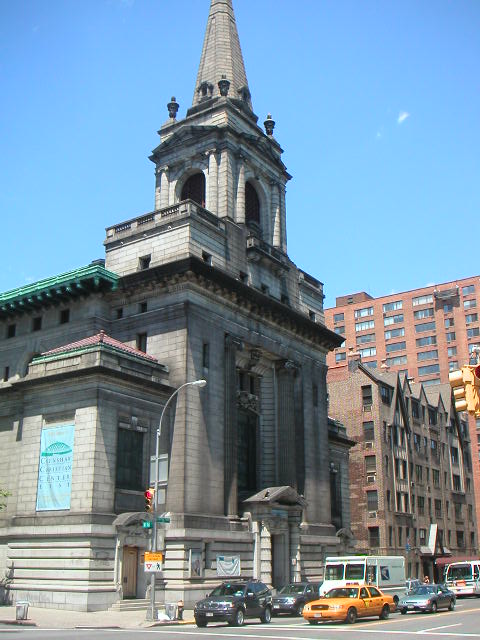 |
|
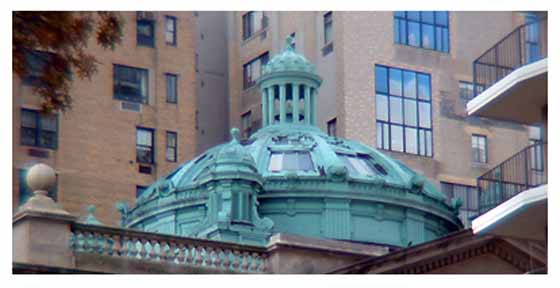 |
|
|
images |
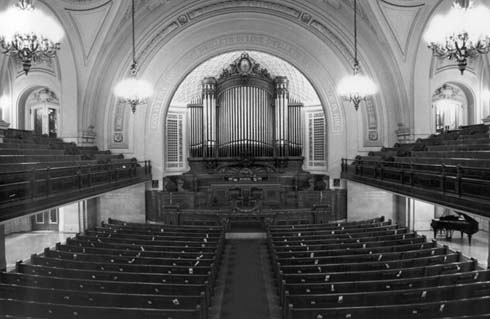 |
|
|
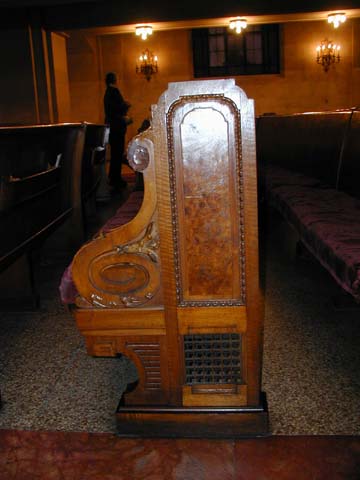 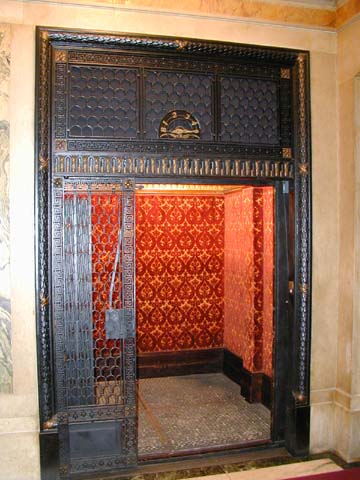 |
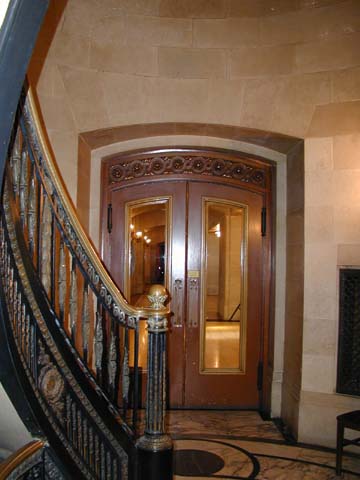 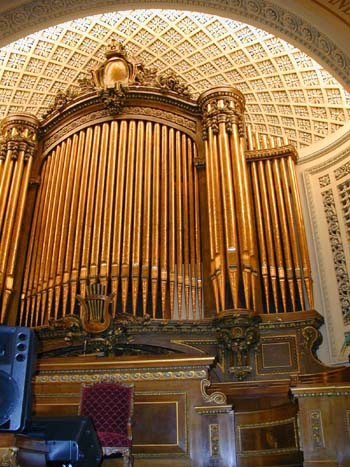 |
|
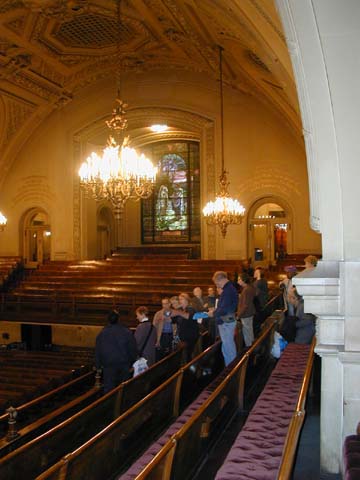 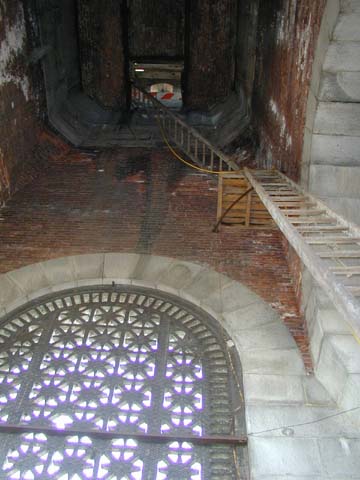 |
|
|
The organ in First Church of Christ, Scientist is a 1903 Hutchings-Votey, Op. 483, from Boston, Massachusetts, consisting of four manuals with 69 ranks. Minor additions were made in 1930 by the firm of Hook & Hastings, also of Boston. The organ is currently in need of a major restoration. In 2003 the building was offered for sale, the members having merged with the Second Church of Christ, Scientist. |
|
|
"Carrère & Hastings's evocation of the low church architecture of Georgian London and New England set the tone for many subsequent Christian Science churches throughout the northeast. Carrère & Hastings achieved a remarkable sense of solidity not only through the blocky composition, inspired by the English Mannerist architect Nicholas Hawksmoor, but also through the use of extremely large blocks of a white Concord granite, a stone so hard that it shattered mechanical saws and had to be cut by hand. Inside, the church was less distinctly English in feeling. A gallery wrapped around three sides of the auditorium, and barrel vaults sprang from piers which barely cleared the galleries, creating a powerfully encompassing effect. The room was largely undecorated, except for an elaborate organ case and rich Modern French plasterwork on the ceiling, which also contained roundels of concealed lighting. Supported above the auditorium arches were the church's offices, reading rooms and extensive Sunday school facilities. Clearly expressed on the exterior, their location reflected a unique solution to the problem of the parochial complex. Owen R. Washburn was correct in his assessment for the Architectural Record: "if we may not speak of a cathedral, in this case, we surely possess the metropolitan church." Robert A. M. Stern, Gregory Gilmartin and John Massengale, "New York 1900, Metropolitan Architecture and Urbanism, 1890-1915," (Rizzoli International Publications, Inc., 1983. The Christian Science Church was founded in
Boston by Mary Baker Eddy after the Civil War and emphasized healing
through faith. Mrs. Eddy appointed Augusta Stetson in the 1880s to
establish a branch in New York City. |
|
|
REAL ESTATE DESK Streetscapes The First and Second Churches of Christ, Scientist; A Tale of 2 Warring Churches, and of One Woman By CHRISTOPHER GRAY Published: February 15, 2004, Sunday THE First Church of Christ, Scientist, at 96th Street and Central Park West, is going to leave its sumptuous 1903 building and join with the Second Church, down at 68th Street. That brings full circle this tale of two churches and one woman, Augusta E. Stetson -- and her role in both their creation and the long-ago battles between them. Both churches survived the clashes, although Stetson's own town house adjacent to the First Church is long gone. In 1875, Mary Baker Eddy published ''Science and Health With Key to the Scriptures,'' inspired by her recovery from an illness. Her tenet that disease, death and sin are the result of separation from God, and that prayer could heal, brought rapid growth to the movement she founded in 1879 in Boston as the Christian Science Church. Stetson, born in 1842, attended a lecture on Christian Science and in 1886 organized New York's first Christian Science church, operating for years out of rented quarters. Laura Lathrop, one of the incorporators, was connected with Stetson's effort until 1891, when she founded the Second Church of Christ, Scientist. Later accounts leave no doubt that Stetson resented Lathrop's effort. Despite repeated stories of children who died after Christian Scientists denied them traditional medical care, and frequent descriptions of Christian Science as a cult of fanatics, the movement attracted the educated and well-to-do in increasing numbers. In 1898, the Second Church arranged to buy its present site, the southwest corner of 68th Street and Central Park West. But then Stetson and her followers tried to get the owner of the 68th Street corner to break his contract and sell to them instead. Their attempt failed, and Stetson's group bought the southwest corner of 65th Street and Central Park West, to try to deter the Second Church from building at 68th Street. What The New York Times described as a ''Merry War of Churches'' ended when Stetson surrendered and bought the northwest corner of 96th Street and Central Park West. The Second Church hired the architect Frederick R. Comstock, a Christian Scientist who designed many of the church's buildings, and the 68th Street building was completed in 1900, well ahead of the First Church's structure. Stetson's group retained Carrère & Hastings, known for their luxurious country houses and city mansions -- and later for the New York Public Library building at 42nd and Fifth. The 2,400-seat Central Park West building, completed in late 1903, is one of the city's most sumptuous churches, with quadruple gold-plated chandeliers, mosaic sidewalks and a magnificent exterior described by The Times as ''of the modern French school, rather tending to the Louis XVI period.'' Even before the First Church was finished, Stetson was criticized for her personal ambition and dictatorial attitude, and in 1902, the Mother Church in Boston adopted a rule requiring term limits for the position of first reader, the effective head of each church. The measure was aimed at Stetson and her increasing influence in New York. She resigned as first reader, although she remained in almost absolute power. ''Have nothing to do with the wolves, or those that have anything to do with the wolves,'' she told her congregation of 1,100 in late 1903, referring to those who criticized her, and to those who had left to become members of the Second Church. Those who questioned her authority were frozen out. ''Their friends passed them by without greeting in the church and in the street,'' The Times said, although Stetson said that there was only ''love, harmony, unity and peace'' in the congregation, and that people who criticized her rule were ''mentally unbalanced.'' The First Church gave her a plot of land at the west end of the building, and in 1905 she finished work on a trim neo-Georgian house on the lot, designed by Hunt & Hunt. Despite her heavy hand -- or because of it -- the First Church continued to prosper, and in 1908 was even planning to buy the entire blockfront on Riverside Drive from 109th to 110th Street for a building to accommodate its overflow. But the plan was dropped. In 1909, the Mother Church's board in Boston found that Stetson had said that the First Church was ''the only legitimate Christian Science church in New York City'' and that she had tried ''to control and injure persons by mental means.'' Stetson continued to live at her home and proclaimed her loyalty to Eddy, who remained cryptically silent during most of the Mother Church's proceedings. The leaders of the First Church defied the Mother Church, saying that Stetson was not guilty, and a membership meeting in November 1909 ended in uproar, amid charges and cross-charges. The Mother Church sent to Stetson's house at 7 West 96th a notice of excommunication. The Times noted that for several years the First Church's founder had been ''intermittently in insurrection against the authority of Mrs. Eddy.'' Stetson and her faction were not actually ousted until a mid-November meeting in 1910, when an insurgent group barred her and her loyalists from holding office in the First Church. The Times reported that Stetson remained at home with her blinds drawn. The new leaders of the First Church announced that their Thanksgiving service would be combined with that of the Second Church of Christ, Scientist, a significant move considering their prior relations. When Eddy died in December 1910 she left a jeweled diamond breastpin to Stetson; the will had last been altered in 1904. THE 1915 census listed Stetson at 7 West 96th and described her as a ''preacher of divine science''; also living there were a Norwegian-born cook and two maids. Her activities in the 1910's are not clear, but in 1917 she published a wordy apologia, ''Reminiscences, Sermons, and Correspondence, Proving Adherence to the Principle of Christian Science as Taught by Mary Baker Eddy,'' which maintained that she had been unjustly accused. In the 1920's she began spending large sums on newspaper advertisements to recover her reputation. It was perhaps in response to this that the First Church decided, in 1923, to build a 17-foot-high brick wall separating the church property from Stetson's house. Stetson sued to block the wall's construction, and won. In 1927, she claimed she would never die. She died the next year. In her obituary, The Times said that, despite her excommunication, Stetson was still the ''most prominent figure in the Christian Science movement.'' In 1930, Stetson's house was demolished for the present apartment building at 7 West 96th, designed in a mild Art Deco style by the theater architect Thomas Lamb. Last year, the leaders of the First Church announced that they had put their magnificent building up for sale. A tape-recorded telephone message from the church's office says that services are no longer held there. Catherine Byers, a member of the board, said that the First and Second Churches would consolidate as soon as the 96th Street building was sold. In an e-mail response to a query, Mrs. Byers said, ''We are actually moving along very quickly and especially harmoniously.'' Published: 02 - 15 - 2004 , Late Edition - Final , Section 11 , Column 1 , Page 7 Copyright New York Times. |
|
|
links |
|